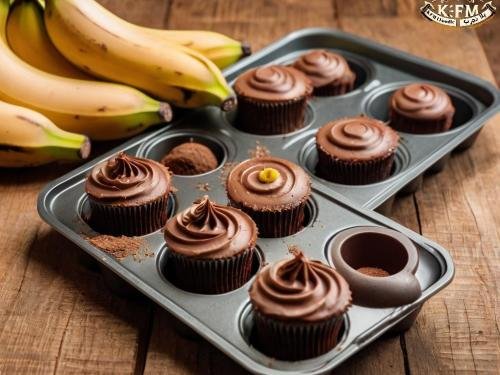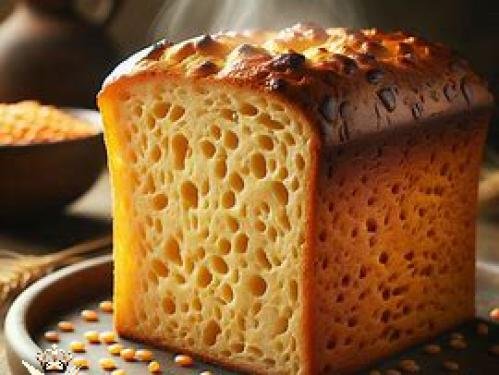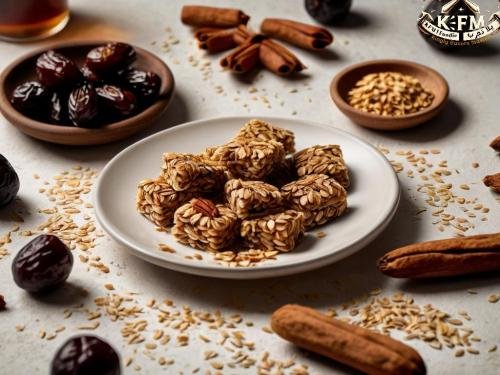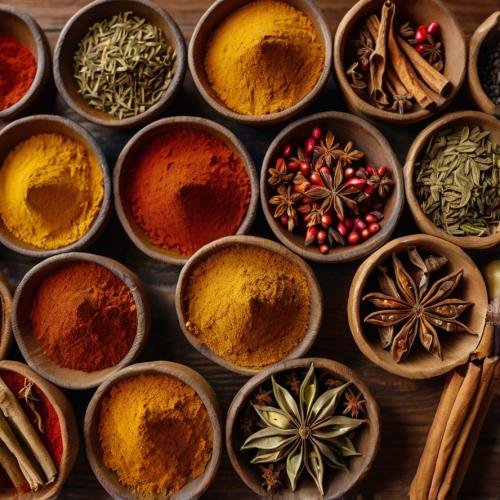Basmati Peshawar Rice or Pakistani Biryani
Basmati Peshawar rice, or Pakistani biryani, is one of the most famous rice varieties, known for its soft texture and light taste. It is highly valued for its rich nutritional content, providing carbohydrates that supply the body with energy, along with essential vitamins and minerals. Proper preparation enhances its appearance and flavor, making it a great choice for special occasions and gatherings.

Ingredients:
- 2 cups of Basmati Peshawar rice
- 4 cups of water
- 2 teaspoons of salt
- 2 tablespoons of oil or ghee
- 1 cinnamon stick (optional)
- 3-4 cardamom pods (optional)
- 2 bay leaves (optional)
Healthy Substitutes for Ingredients:
Fats (Oil or Ghee):
- Replace ghee with healthier oils like olive oil or coconut oil to reduce saturated fats.
- Use low-fat plant-based ghee as a lighter alternative.
Salt:
- Reduce the amount of salt or substitute it with sea salt or Himalayan pink salt to lower sodium intake.
- Enhance flavor using aromatic herbs like thyme or rosemary instead of excess salt.
Rice:
- Substitute Basmati Peshawar rice with fiber-rich options like brown rice or quinoa for added nutritional benefits.
- Use wild rice as an extra source of protein and fiber.
Spices and Flavorings:
- If cinnamon or cardamom is unavailable, use cumin, saffron, or turmeric for a distinctive flavor.
- Replace bay leaves with dried basil leaves for a natural and mild flavor.
Additions:
- Boost nutritional value by adding steamed vegetables such as carrots and peas.
- Mix in legumes like lentils or chickpeas with the rice to increase plant-based protein content.
Preparation Method:
Cooking Time:
- Preparation time: 35 minutes (including washing and soaking the rice)
- Cooking time: 20 minutes
- Steaming time: 5 minutes
- Total time: 60 minutes
Step-by-Step Cooking Instructions:
Washing the Rice:
- Place the rice in a large bowl and rinse thoroughly under running water.
- Gently stir the rice with your hands until the water runs clear.
- Repeat the rinsing process several times to remove excess starch, ensuring separate grains after cooking.
Soaking the Rice:
- Soak the rice in warm water for 30 minutes.
- This helps reduce cooking time and results in longer, softer grains.
Preparing the Pot:
- Heat 2 tablespoons of oil or ghee in a large pot over medium heat.
- Add the cinnamon stick, cardamom pods, and bay leaves if you prefer a rich aroma.
- Stir the spices in the oil for a few seconds until their fragrance is released.
Adding Water and Salt:
- Pour 4 cups of water into the pot and add 2 teaspoons of salt.
- Bring the water to a full boil before adding the rice.
Cooking the Rice:
- Drain the soaked rice thoroughly.
- Add it to the boiling water and gently stir it once to distribute evenly.
- Reduce the heat to the lowest setting.
- Cover the pot tightly and let the rice cook for 15-20 minutes until it fully absorbs the water.
Steaming the Rice After Cooking:
- Remove the pot from the heat and leave it covered for 5 minutes without opening the lid.
- This allows the rice to finish cooking with internal steam.
Fluffing the Rice:
Use a fork to gently separate the grains without crushing them, giving the rice a light and fluffy texture.
Serving Suggestions:
Serve the rice hot alongside main dishes such as grilled chicken, spiced cooked meat, or any other complementary dish.
Additional Tips for Cooking Rice:
- Wash the rice thoroughly to reduce starch and achieve separate grains.
- Heat the oil or ghee and briefly add spices to release their flavors without burning them.
- Add rice to already boiling water and avoid excessive stirring to prevent grain breakage.
- Lower the heat after adding the rice and cover the pot to ensure even cooking.
- Keep the rice covered after cooking for a few minutes to allow steaming and texture stabilization.
Dietary Considerations:
Vegetarians:
- Replace ghee with plant-based oils and serve rice with legumes or vegetables to compensate for protein.
Diabetics:
- Reduce the rice portion or substitute it with brown rice to regulate blood sugar levels.
Heart & Blood Pressure Patients:
- Reduce salt and ghee, and opt for healthy oils.
Kidney Patients:
- Monitor salt and accompanying protein intake.
Diet Plans:
- Weight Loss: Reduce rice and increase vegetables or healthy proteins.
- Low-Carb Diets: Substitute rice with brown rice or cauliflower rice.
- Low-Fat Diets: Use olive oil instead of ghee and limit the quantity.
- Children: Reduce spices and salt, and add vegetables for a balanced meal.
Best Dishes to Serve with Peshawar Rice:
Peshawar rice is a light and flavorful dish that pairs well with a variety of meat and vegetarian dishes. Here are some perfect pairings:
- Grilled Chicken: A great option with Peshawar rice, marinated with special spices and grilled to add a delicious taste.
- Spiced Cooked Meat: Lamb or beef cooked with Eastern spices like turmeric and saffron enhances the rice’s flavor.
- Grilled or Fried Fish: Seafood lovers can pair Peshawar rice with fish marinated in lemon, garlic, and spices for a perfect match.
- Moussaka: For a healthy vegetarian option, serve it alongside moussaka (eggplant cooked with tomatoes).
- Appetizers like Hummus or Mutabbal: Peshawar rice pairs well with healthy appetizers such as hummus or mutabbal made with tahini and lemon.
Frequently Asked Questions:
- Can other types of rice be used instead of Peshawar rice?
Yes, alternatives like Basmati or Egyptian rice can be used, but the taste and texture may vary.
- Can Peshawar rice be stored after cooking?
Yes, it can be stored in the refrigerator for up to two days. Ensure it is well-covered to maintain its flavor and quality.
- What is the difference between Peshawar rice and regular rice?
Peshawar rice has longer, softer grains compared to regular rice, making it more flexible in preparation and giving it a lighter texture.
- Does Peshawar rice have a higher nutritional value than regular rice?
Yes, it contains more carbohydrates, providing greater energy compared to regular rice.
- Can Peshawar rice be included in diet plans?
Yes, but it should be consumed in moderation due to its high carbohydrate content.
Alternative Recipes with Different Ingredients for Enhanced Health Benefits:
Peshawar Rice with Vegetables:
- Add vegetables like carrots, peas, red bell peppers, or broccoli for extra fiber and vitamins.
- Vegetables can be cooked with the rice or grilled and added after cooking.
Peshawar Rice with Plant-Based Protein:
- Add red lentils or boiled chickpeas to increase protein content and nutritional value.
- Grilled tofu cubes can be used as a plant-based protein alternative.
Peshawar Rice with Nuts and Seeds:
- Add roasted almonds, walnuts, or chia and flax seeds for an extra boost of healthy fats and Omega-3.
- Toasted nuts can be sprinkled over the rice before serving.
Peshawar Rice with Coconut Milk:
- Use coconut milk instead of water for cooking rice to enhance flavor and provide healthy fats.
- Best paired with Asian dishes or as a nutritious meal for vegetarians.
Peshawar Rice with Turmeric and Ginger:
- Add fresh or ground turmeric while cooking to benefit from its anti-inflammatory properties.
- Grated ginger can be included to aid digestion and boost immunity.
Peshawar Rice with Yogurt and Mint:
- Serve rice with low-fat yogurt and chopped mint for a light and easy-to-digest meal.
- This option is ideal for those with digestive issues or those looking for a refreshing, light dish.
Nutritional Values and Health Benefits of Each Ingredient:
Peshawar Rice (2 cups):
- Calories: 700 kcal
- Carbohydrates: 150g
- Protein: 14g
- Fats: 1g
- Fiber: 2g
- Benefits: A rich source of carbohydrates that provide sustained energy and support physical activity.
Water (4 cups):
- Calories: 0 kcal
- Benefits: Essential for cooking, hydration, and supporting metabolism.
Salt (2 teaspoons):
- Calories: 0 kcal
- Sodium: 4,600 mg (should be used in moderation to prevent high blood pressure).
- Benefits: Helps balance body fluids and enhances flavor, but should be limited for people with hypertension.
Oil or Ghee (2 tablespoons):
- Calories:
- Olive oil: 240 kcal
- Ghee: 200-220 kcal
- Fats:
- Olive oil: 27g of healthy fats
- Ghee: 22g of saturated and unsaturated fats
- Benefits:
- Olive oil: Rich in antioxidants, supports heart health.
- Ghee: Provides a rich flavor and quick energy but should be consumed in moderation.
Cinnamon Stick (Optional):
- Calories: 5 kcal
- Carbohydrates: 1.3g
- Fiber: 0.8g
- Benefits: Contains antioxidants that improve heart health and regulate blood sugar levels.
Cardamom (3-4 pods, Optional):
- Calories: 10 kcal
- Carbohydrates: 2.2g
- Fiber: 0.6g
- Benefits: Aids digestion, reduces bloating, and adds an aromatic flavor.
Bay Leaves (2 leaves, Optional):
- Calories: 2 kcal
- Carbohydrates: 0.5g
- Fiber: 0.1g
- Benefits: Supports digestion and imparts a mild aromatic flavor to dishes.
Total Nutritional Values for the Recipe:
- Calories: 910 - 960 kcal (depending on the type of oil used).
- Carbohydrates: 153g
- Protein: 14g
- Fats: 22 - 27g
- Fiber: 3.5g
Health Benefits:
- A high-energy, carbohydrate-rich recipe, ideal for physical activity.
- Spices enhance digestion and add flavor without significant extra calories.
- Ingredients can be adjusted to fit various dietary preferences.




















